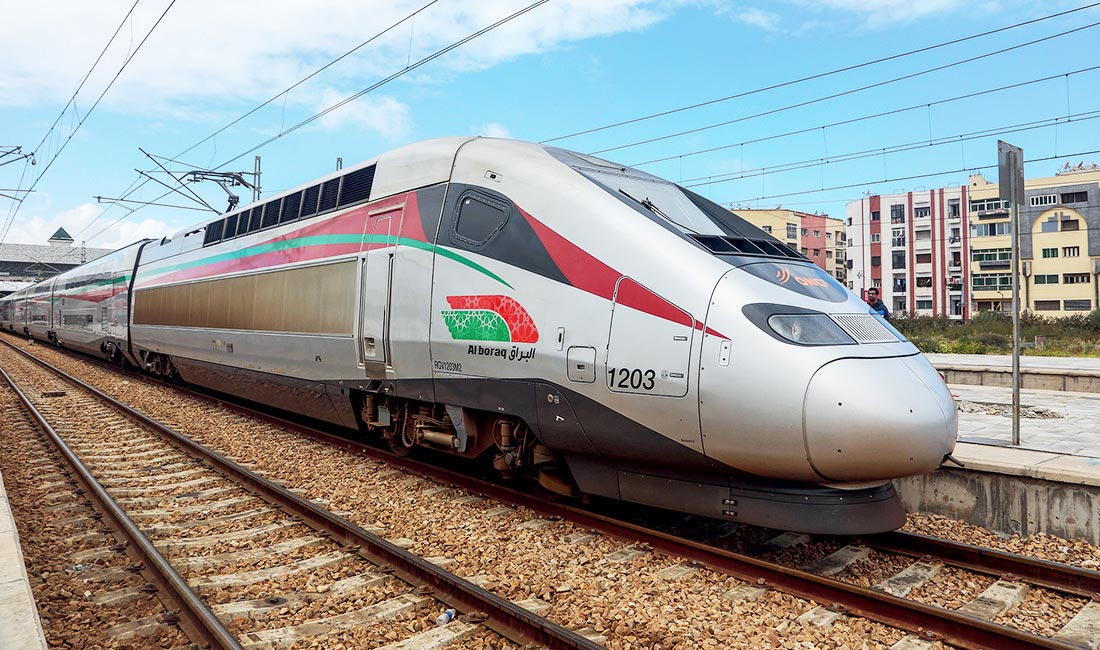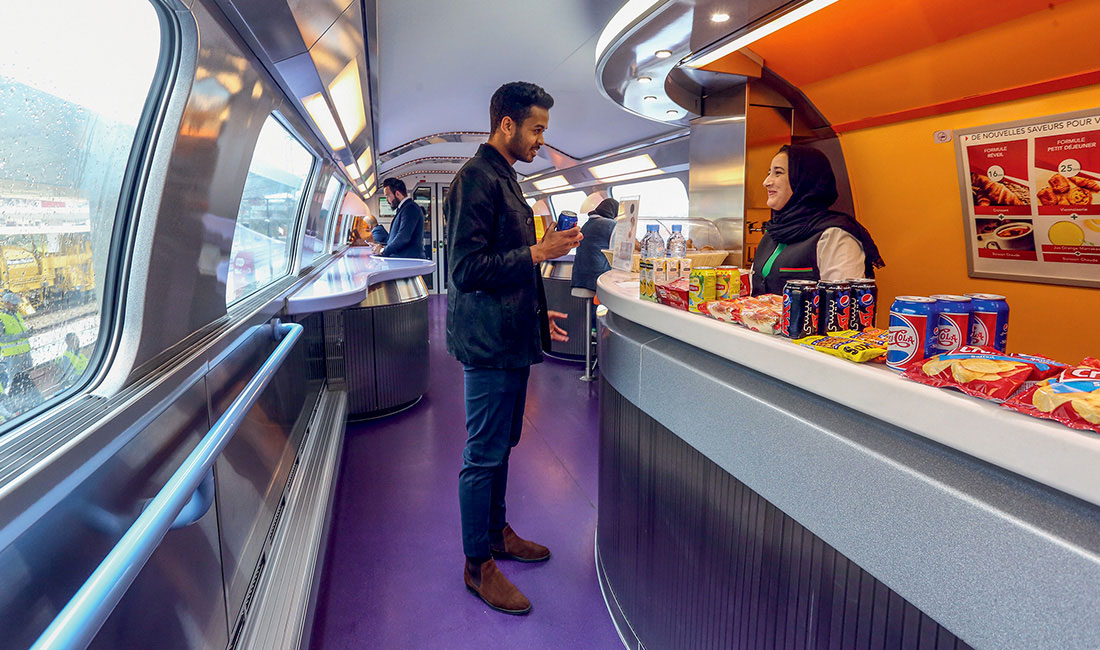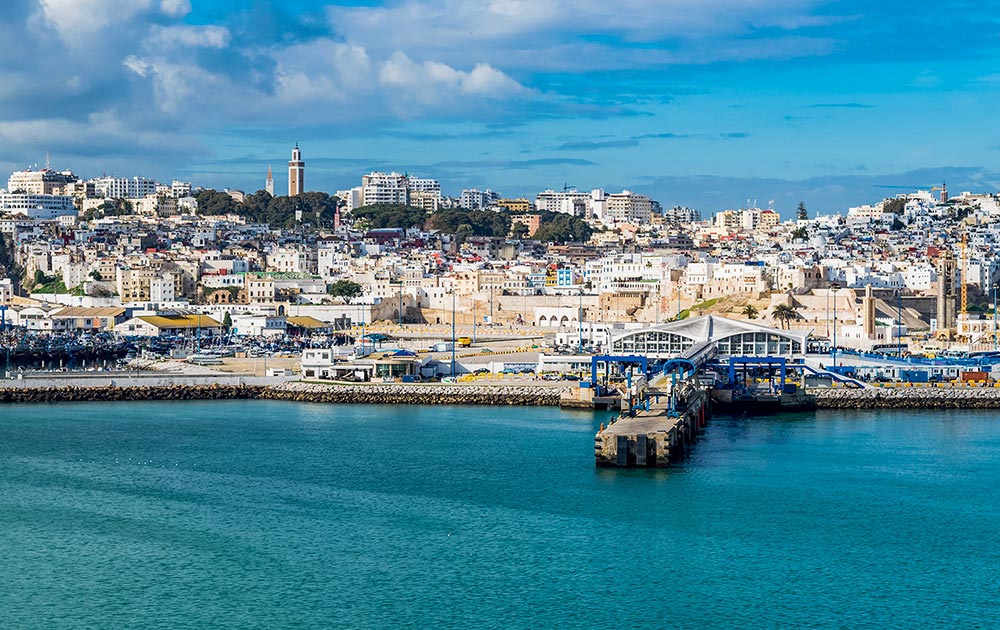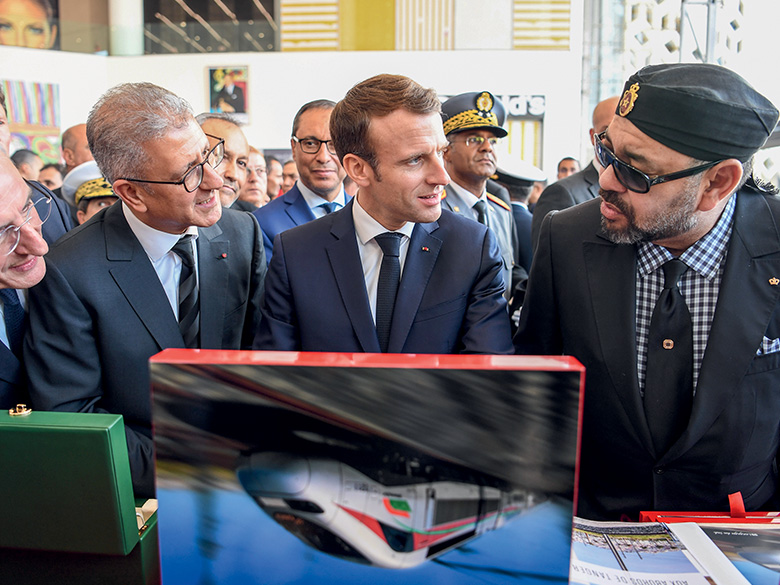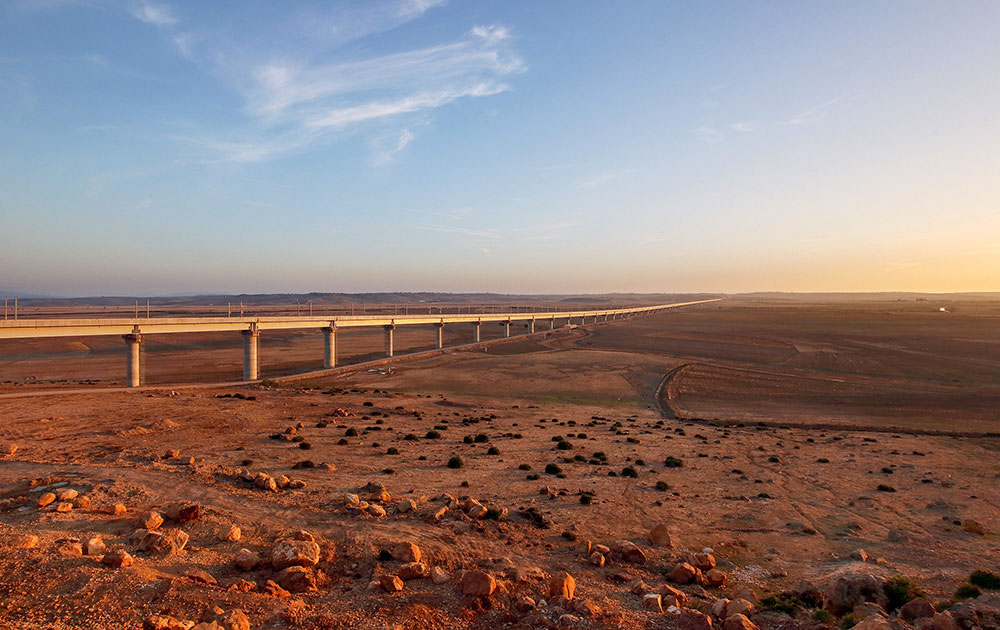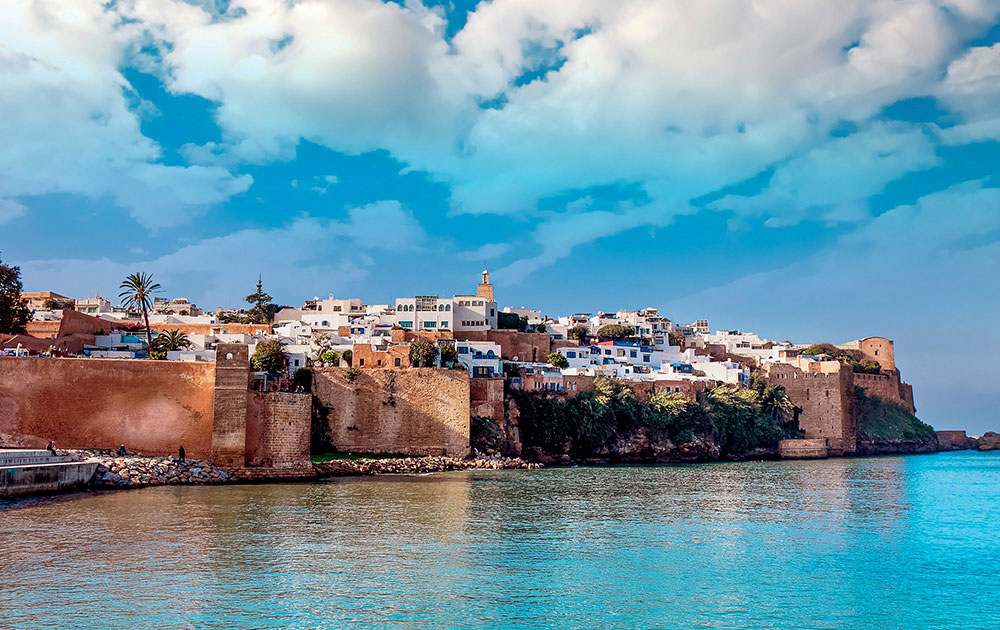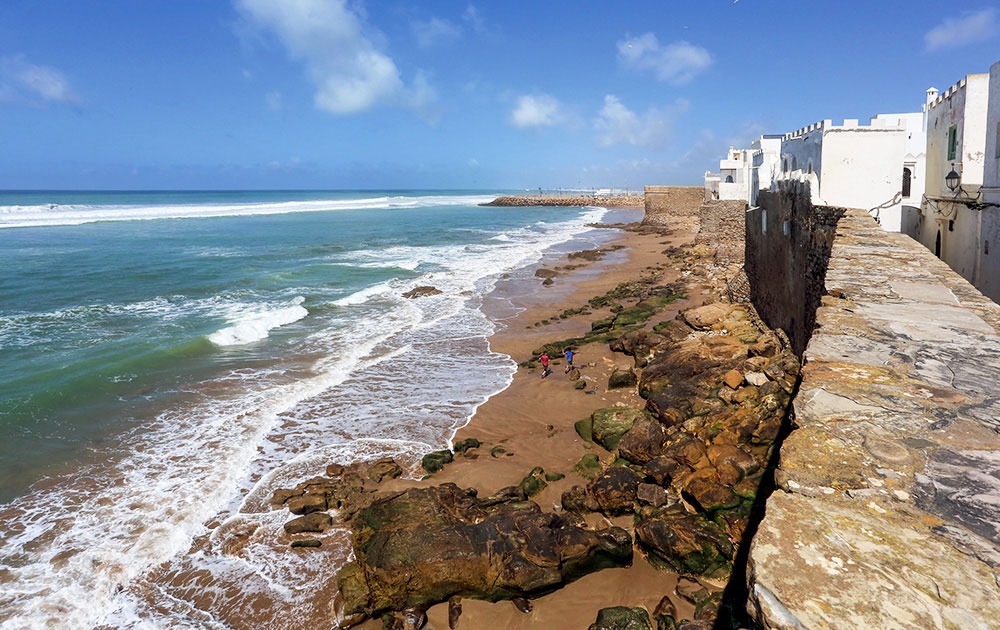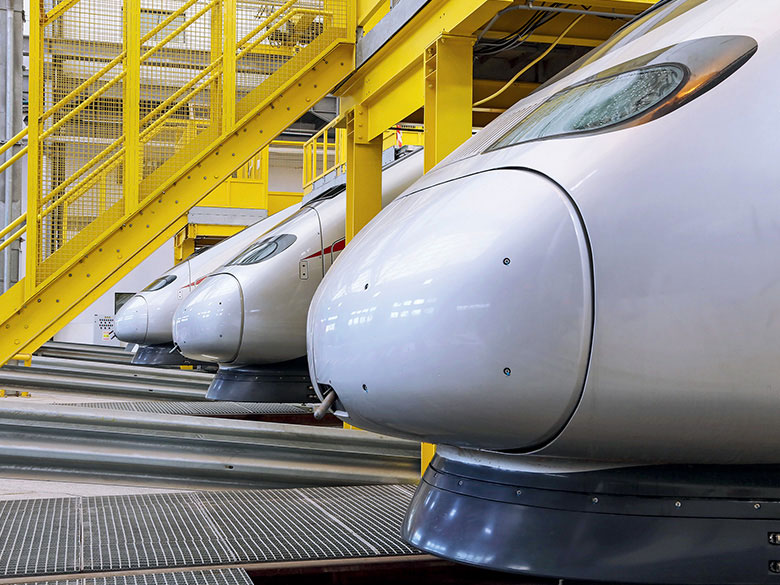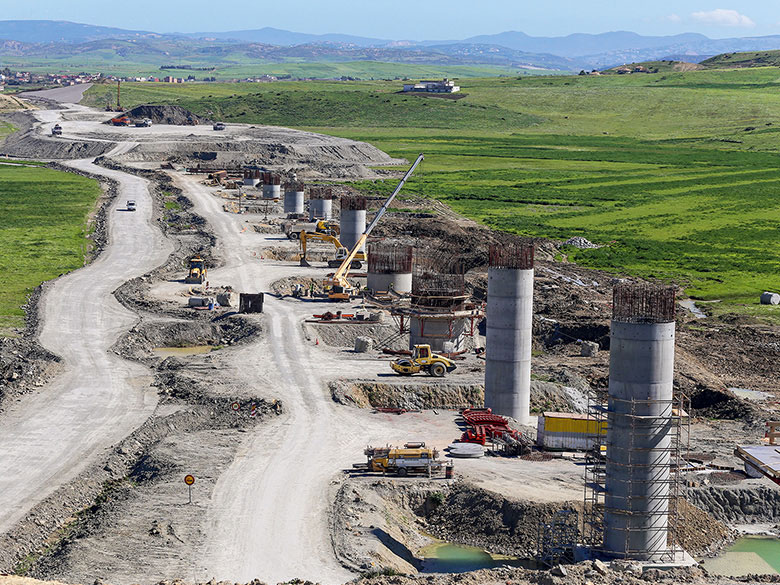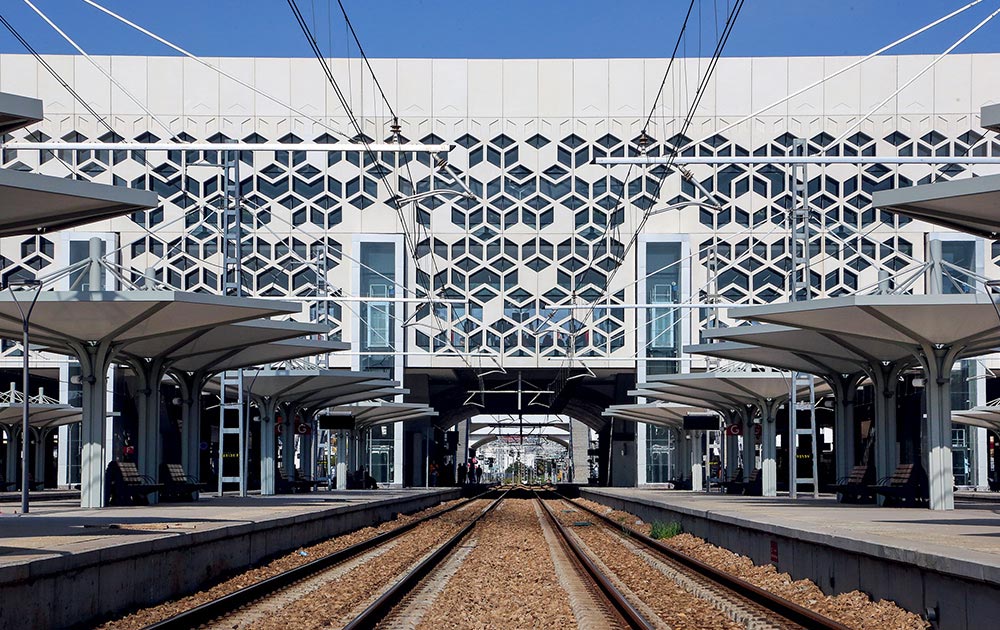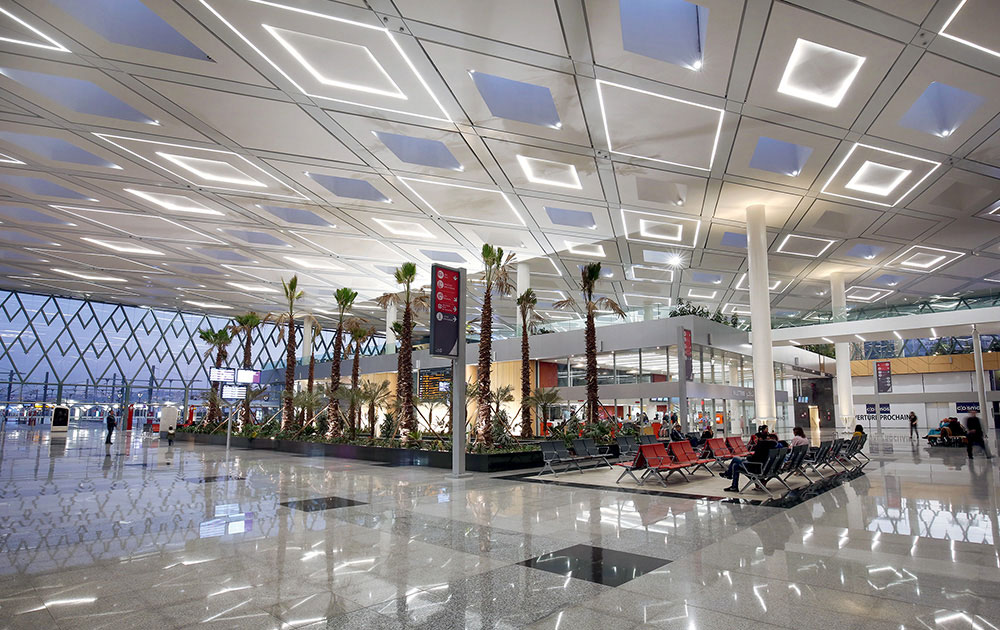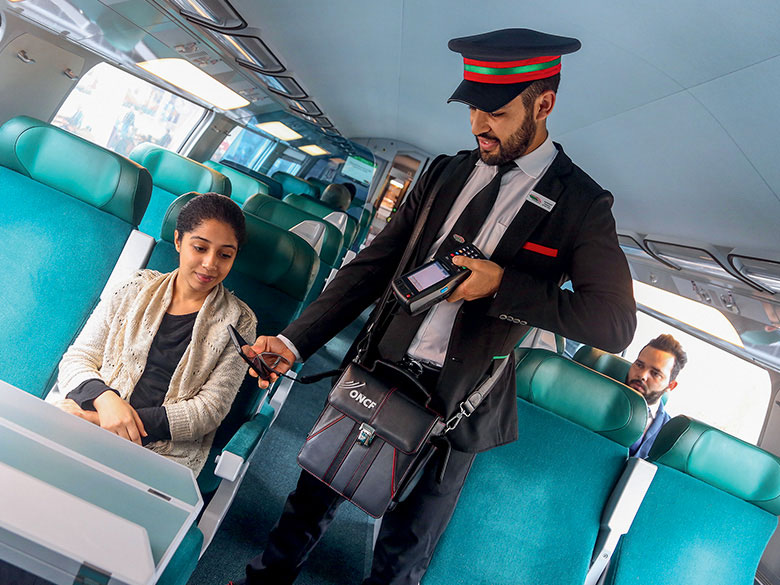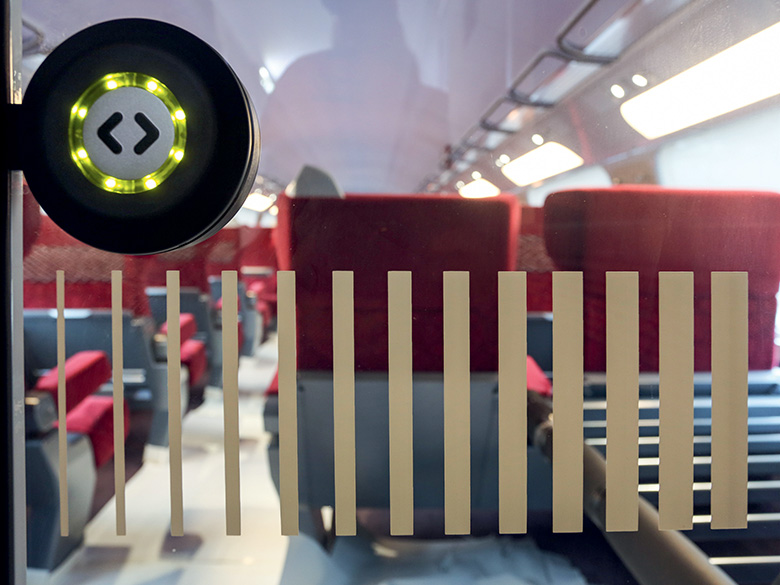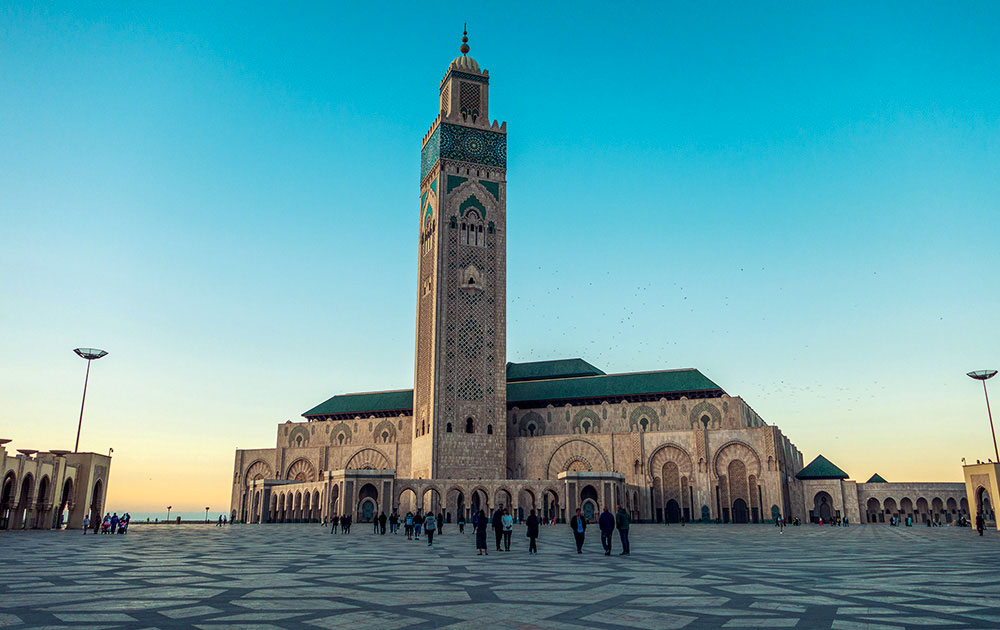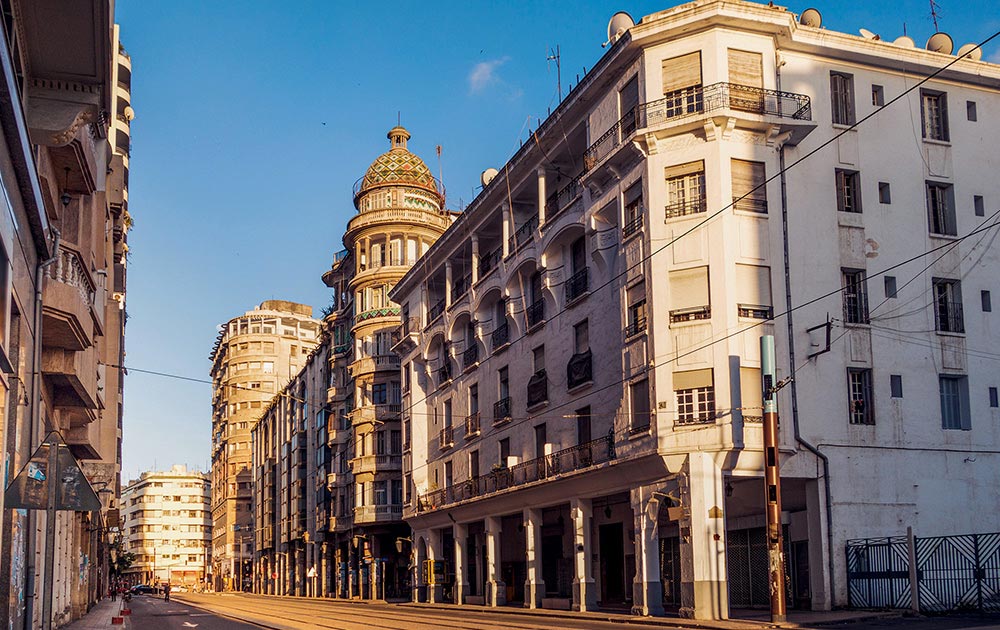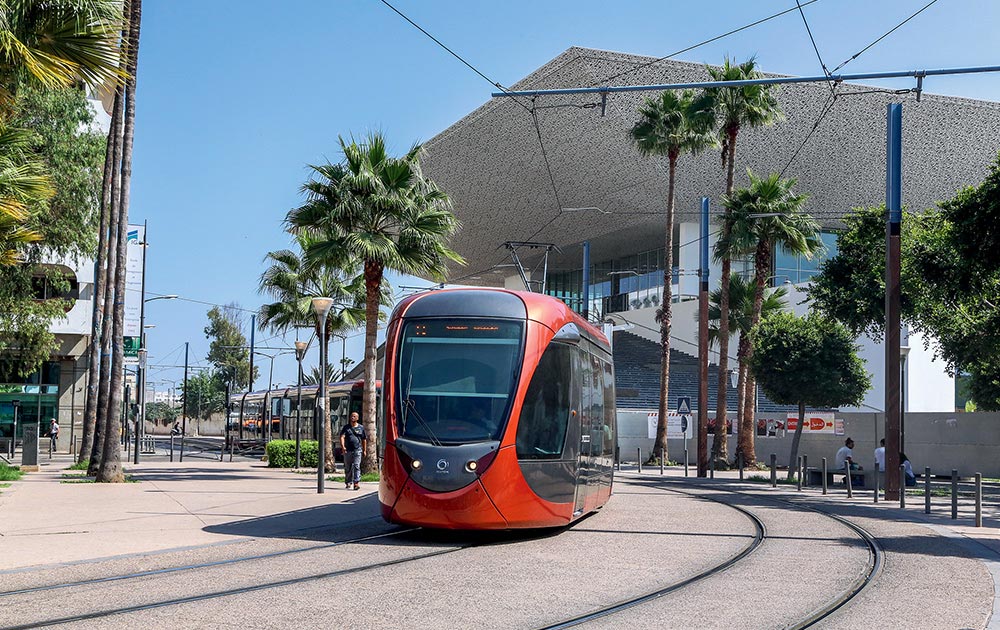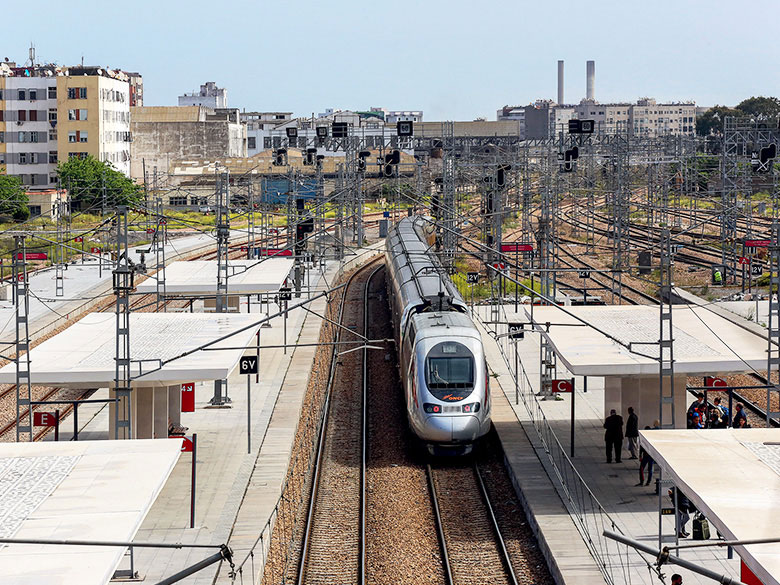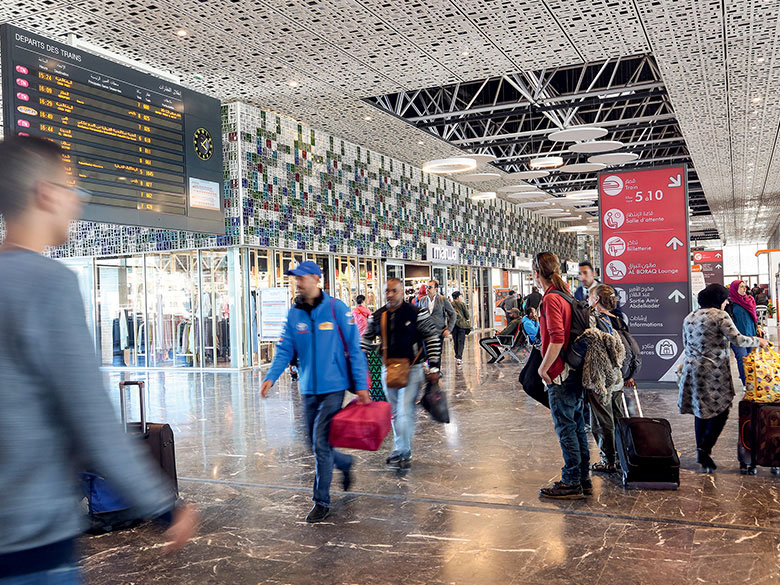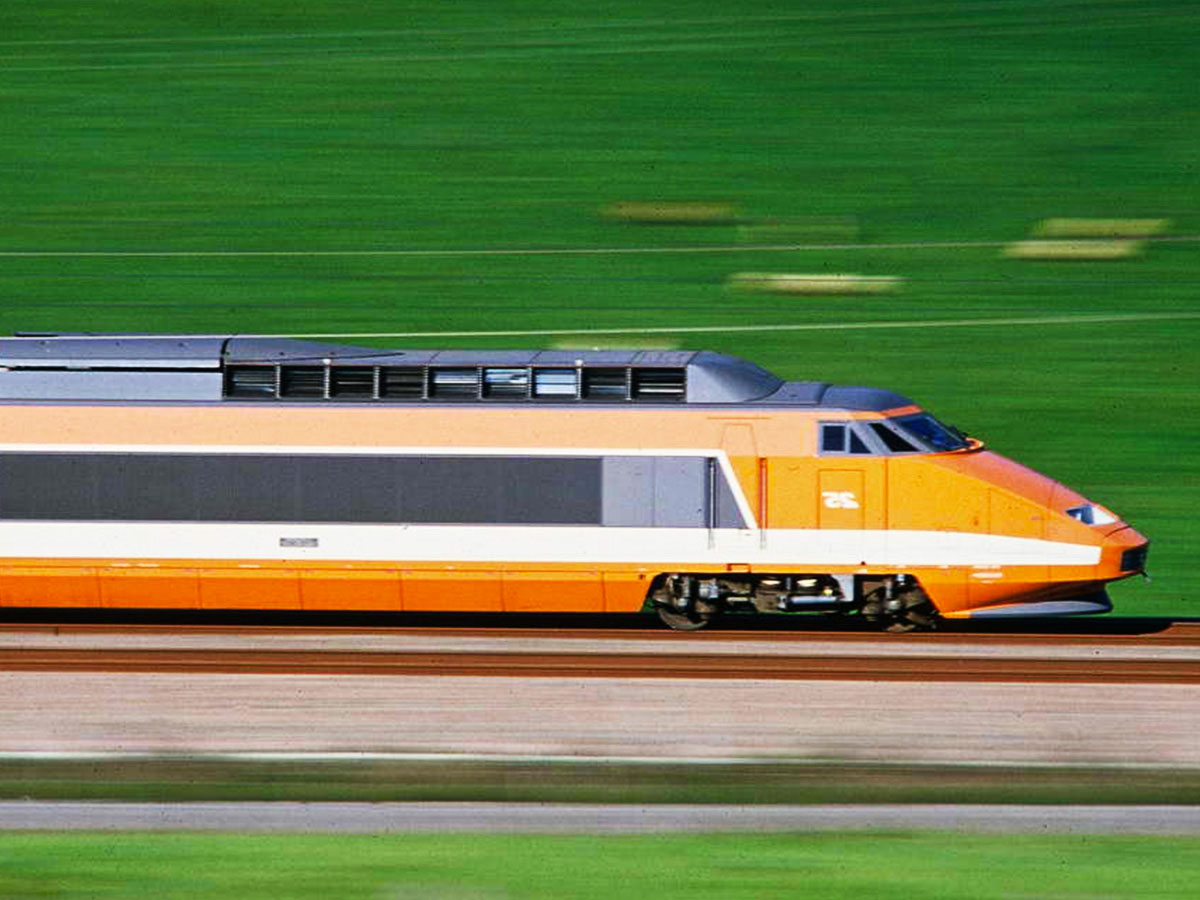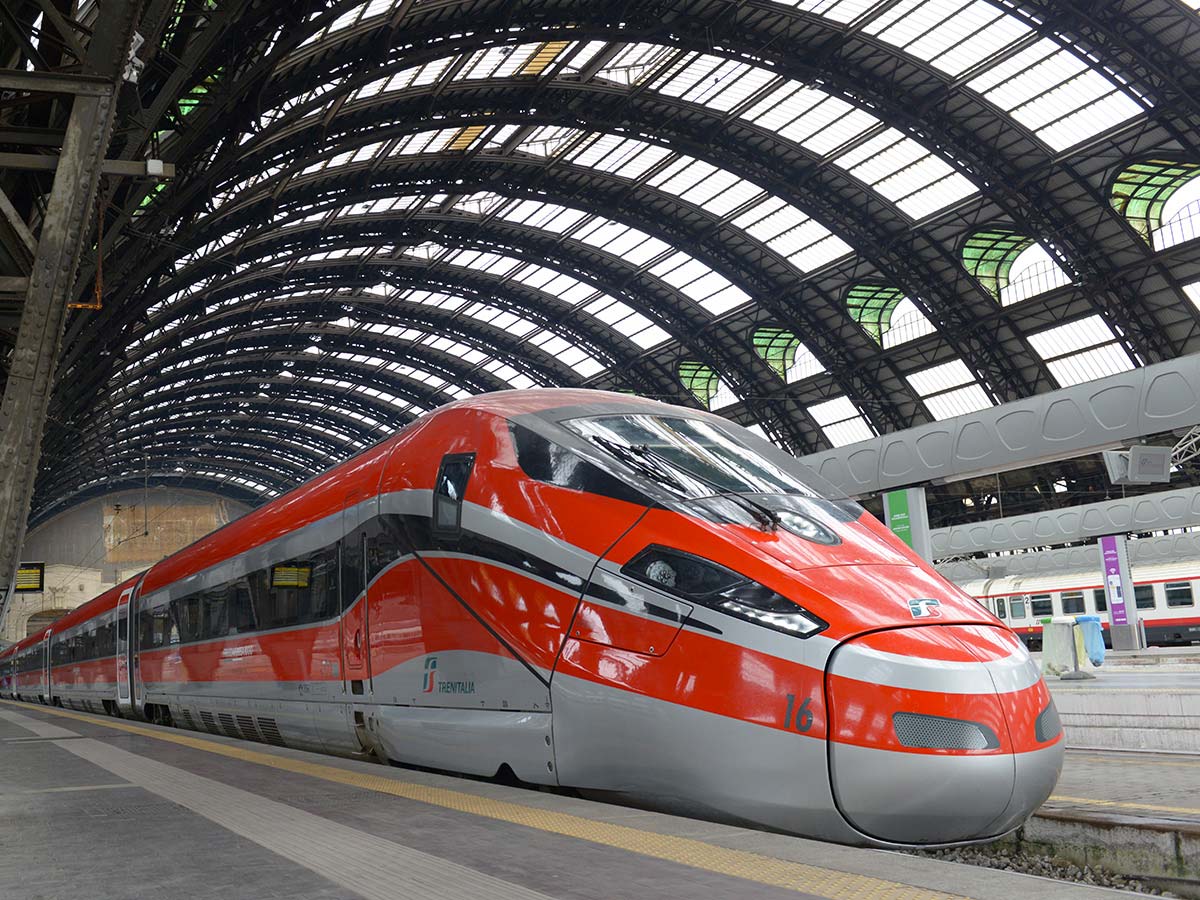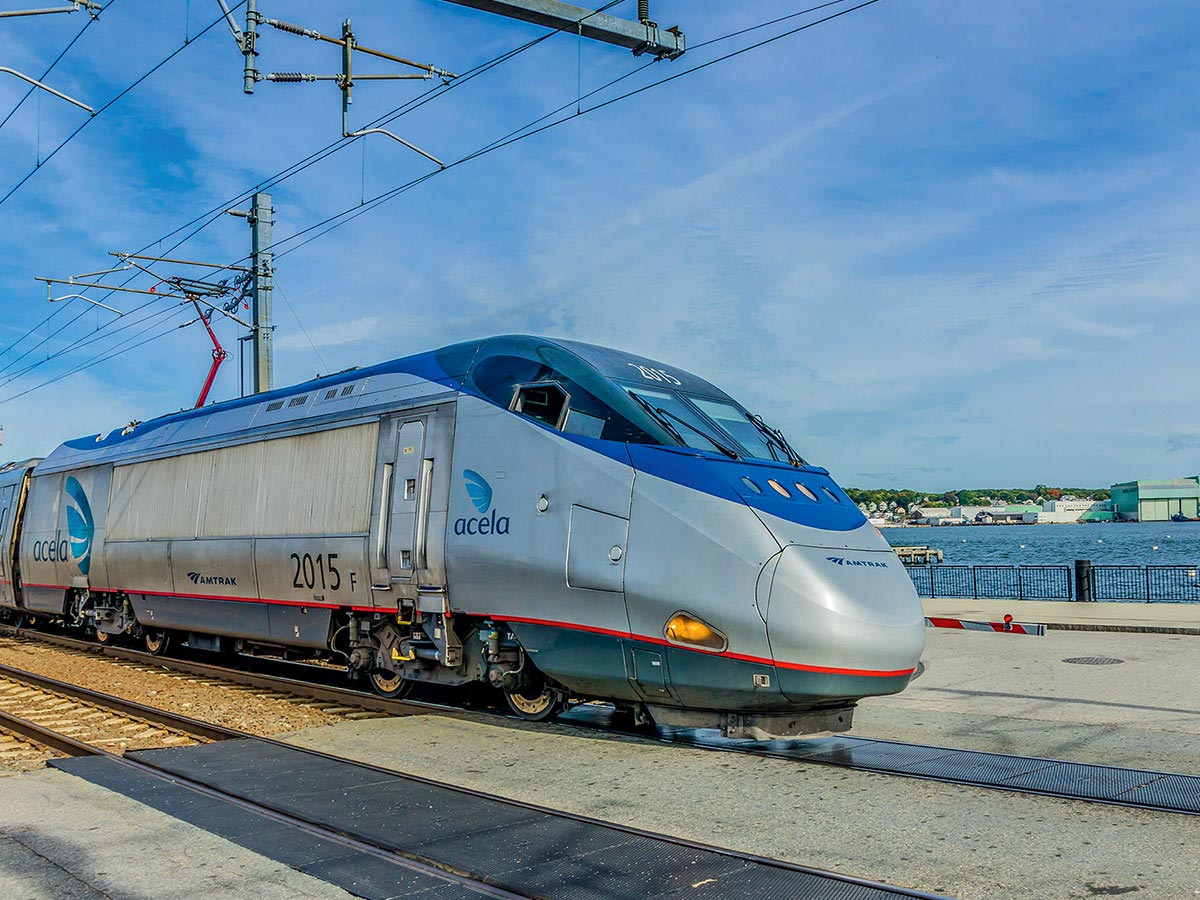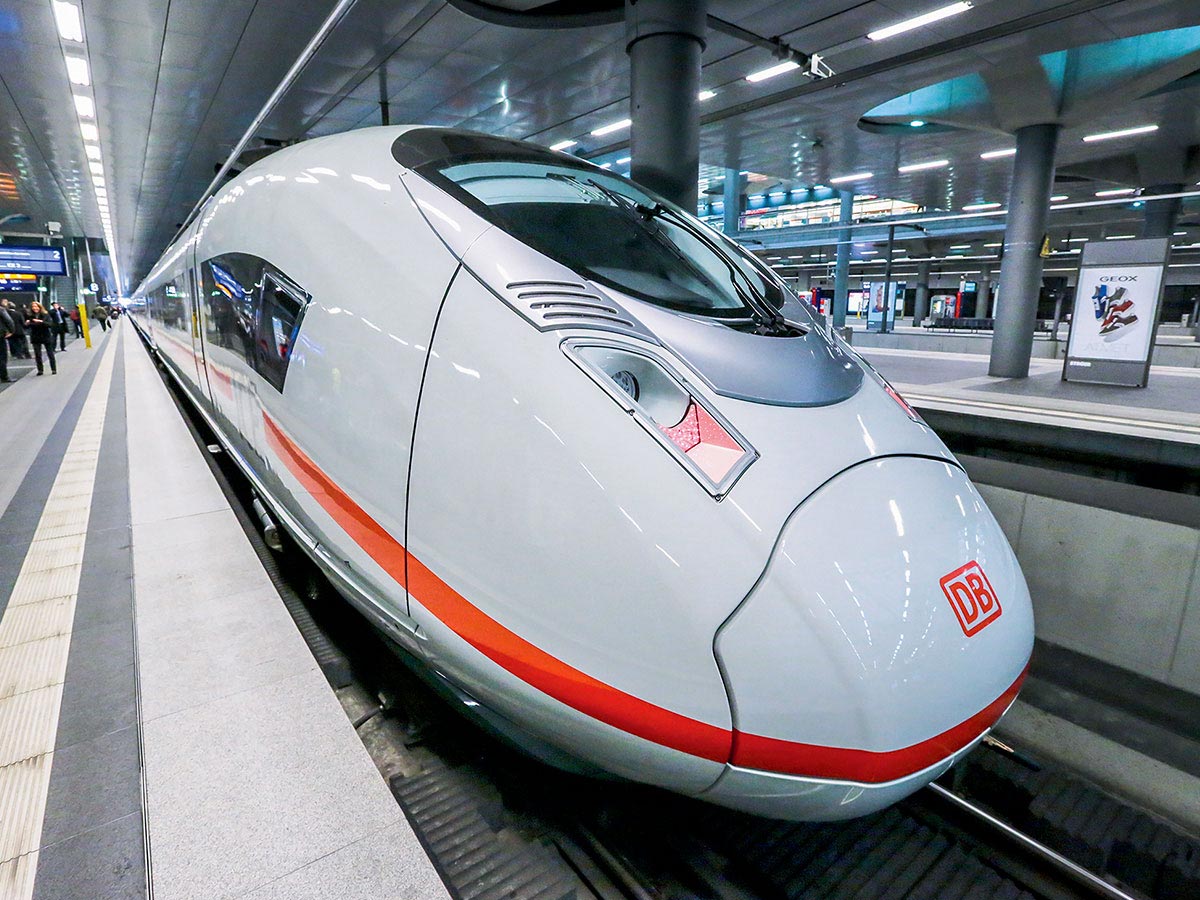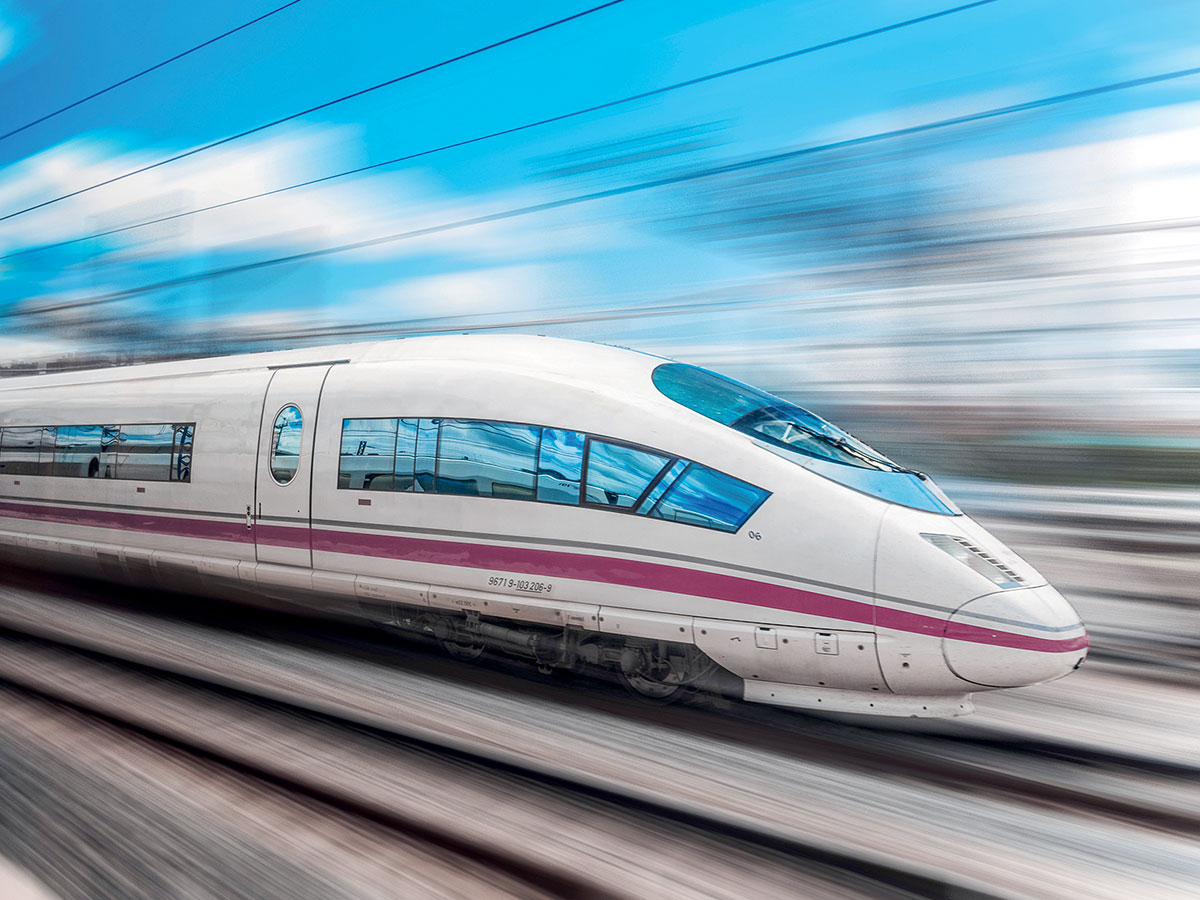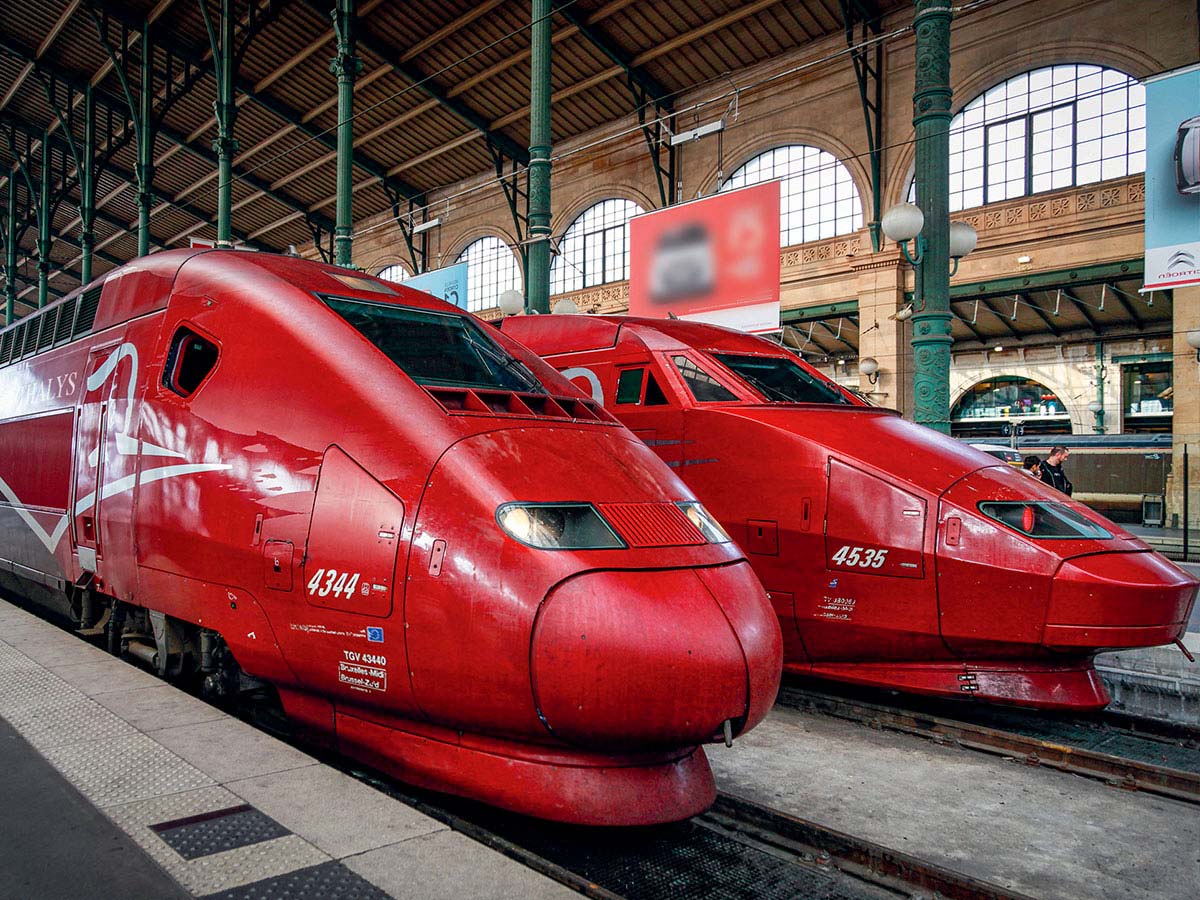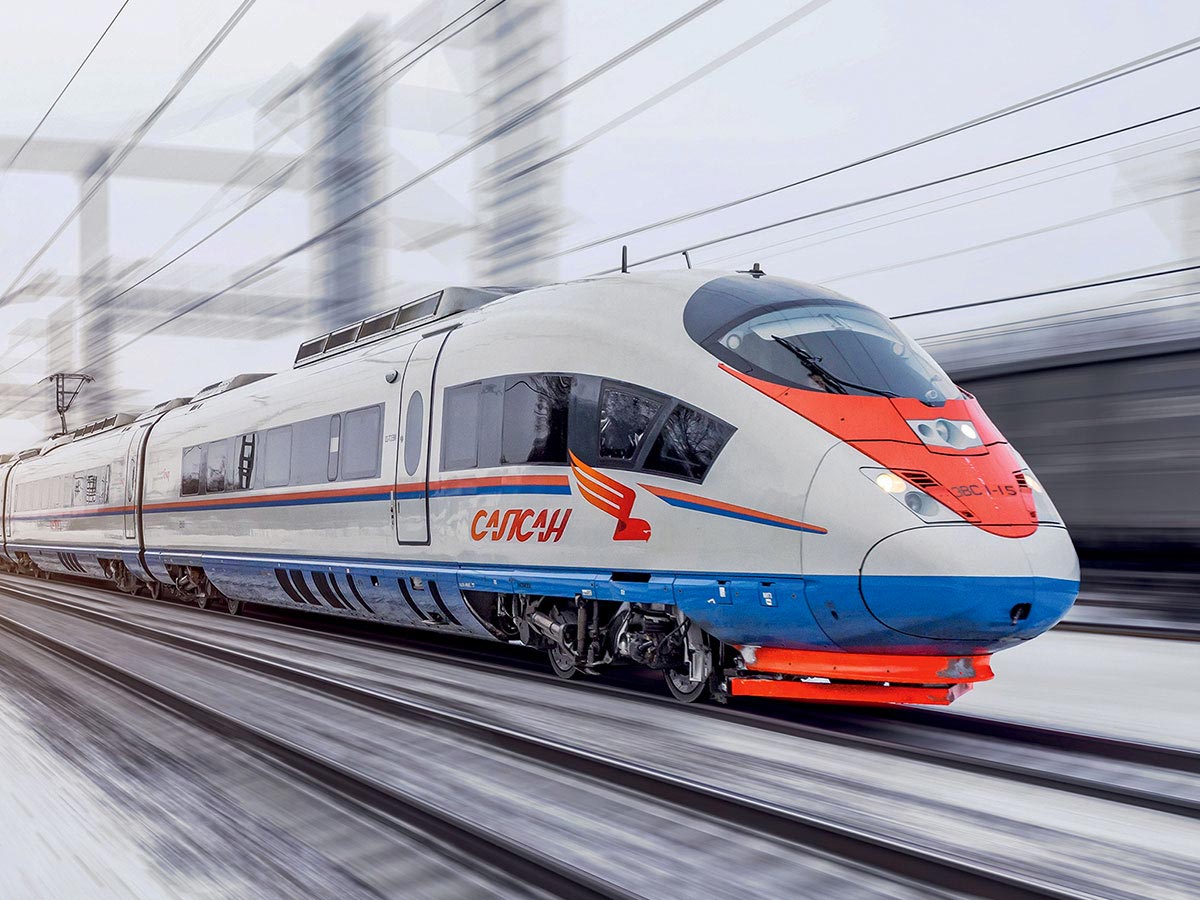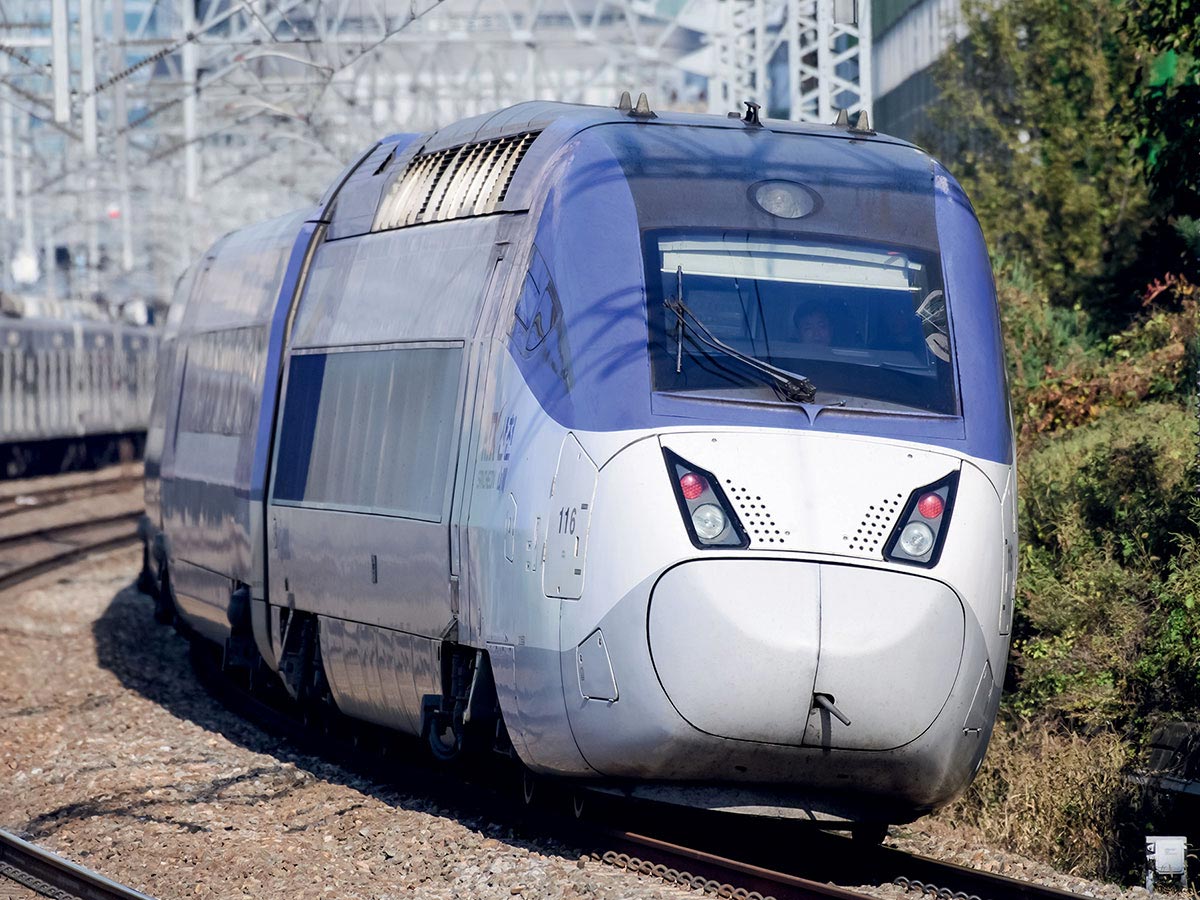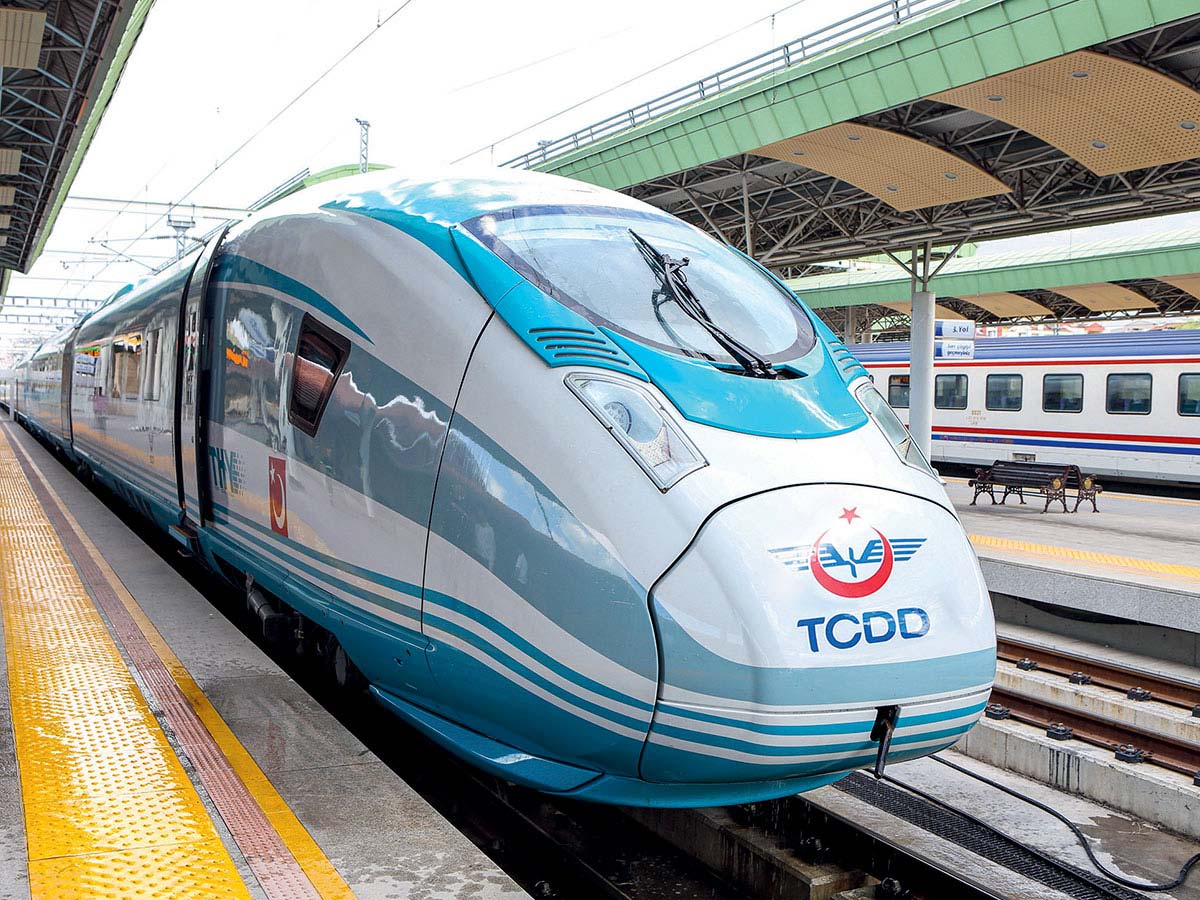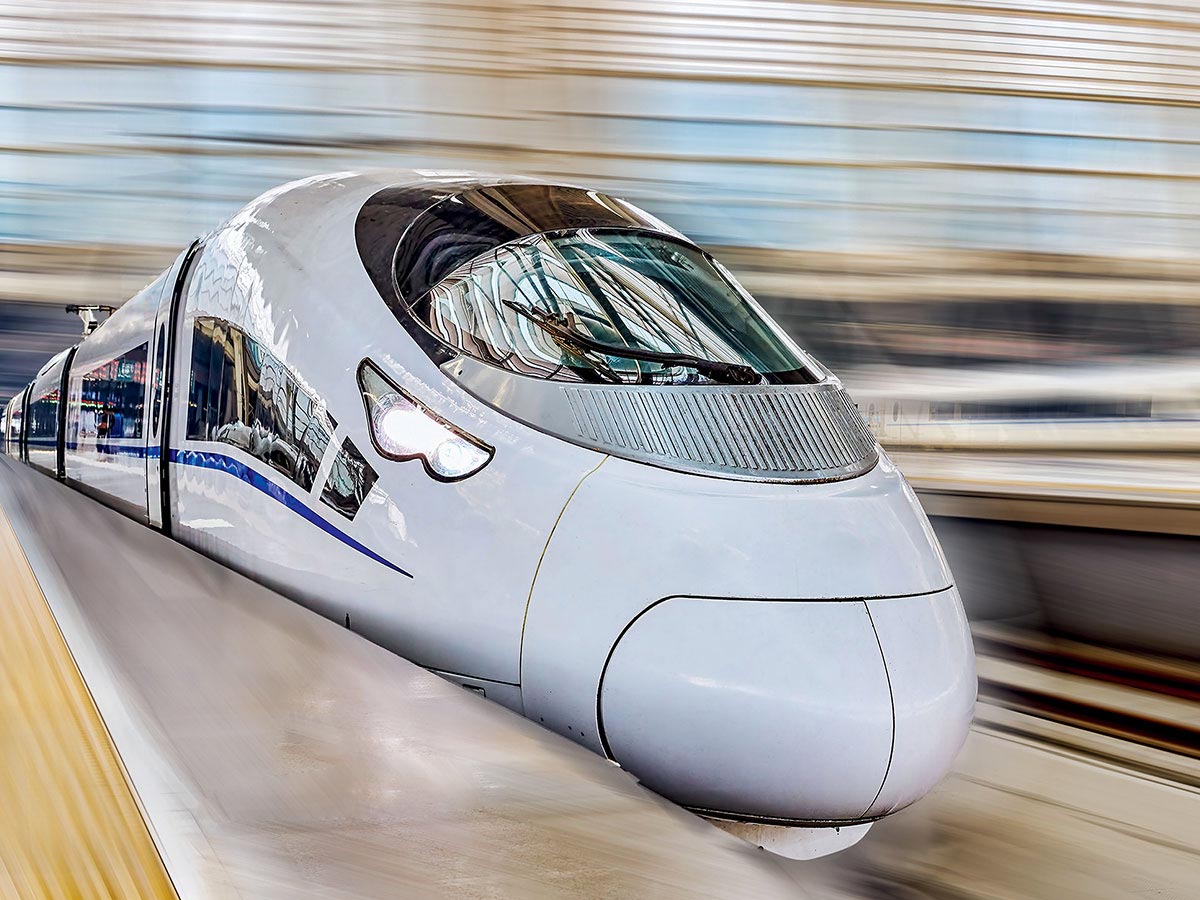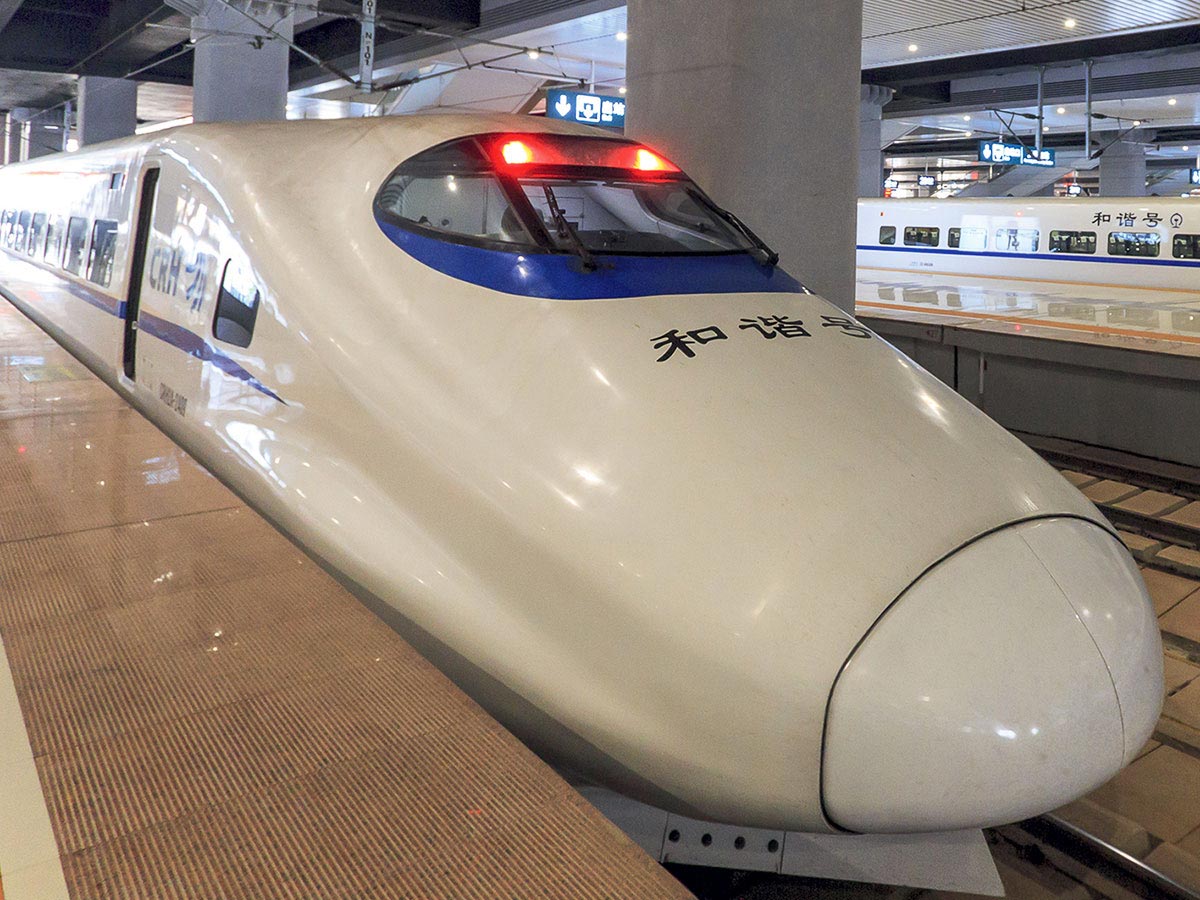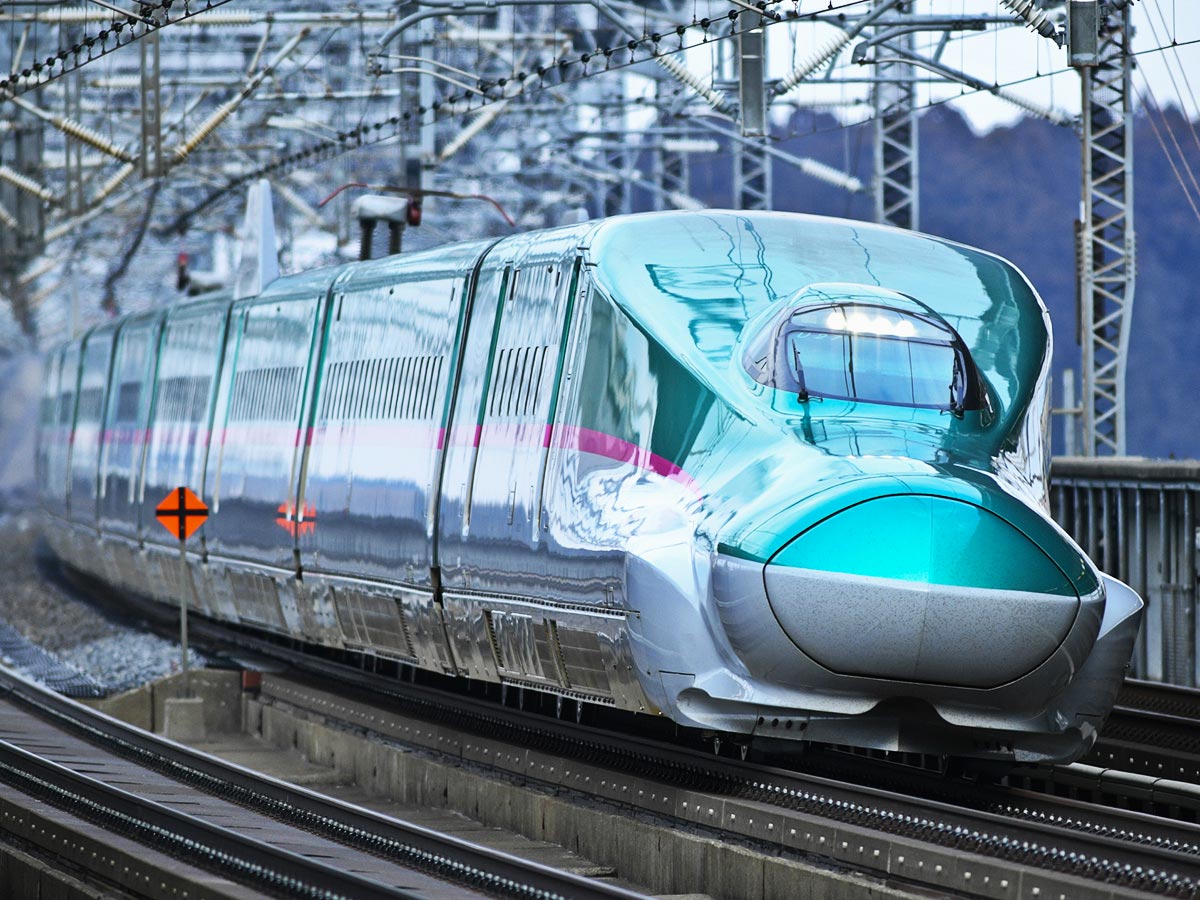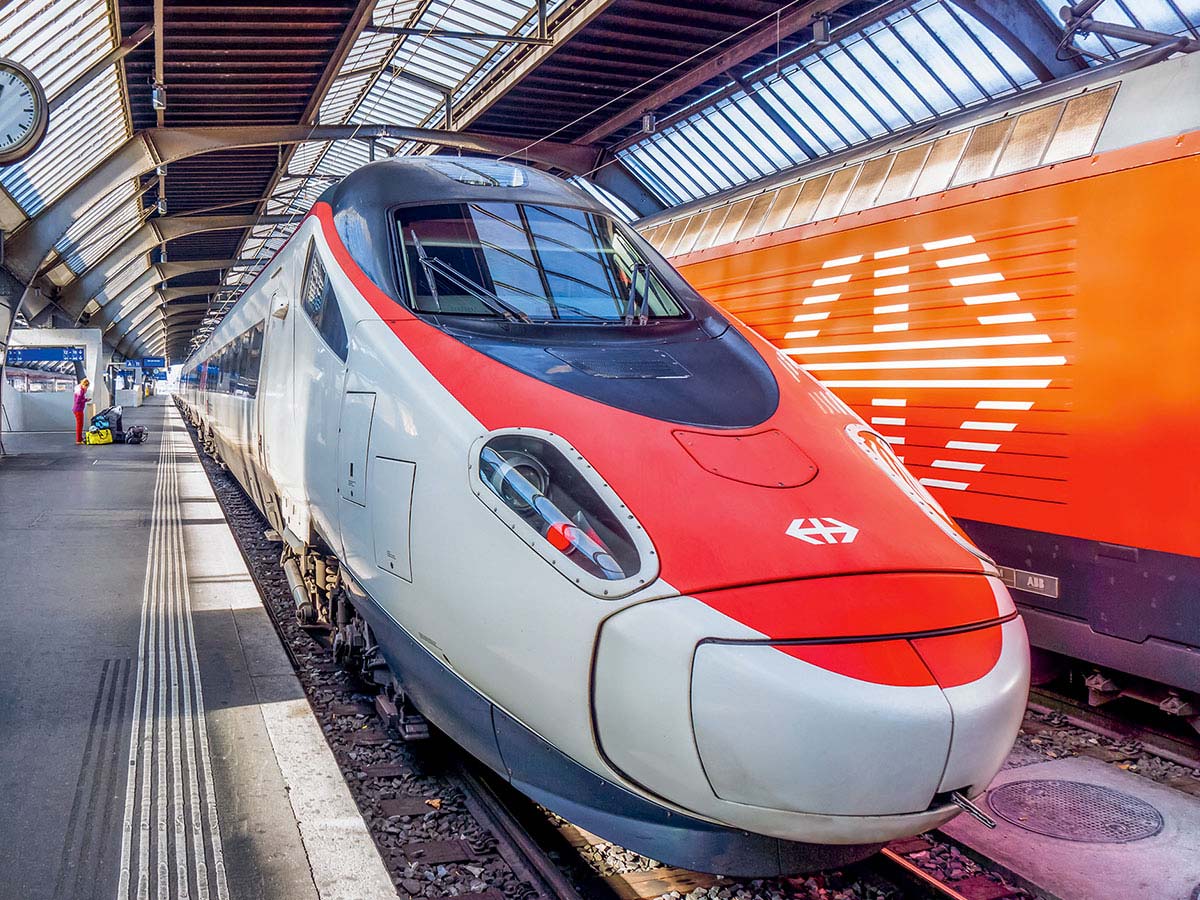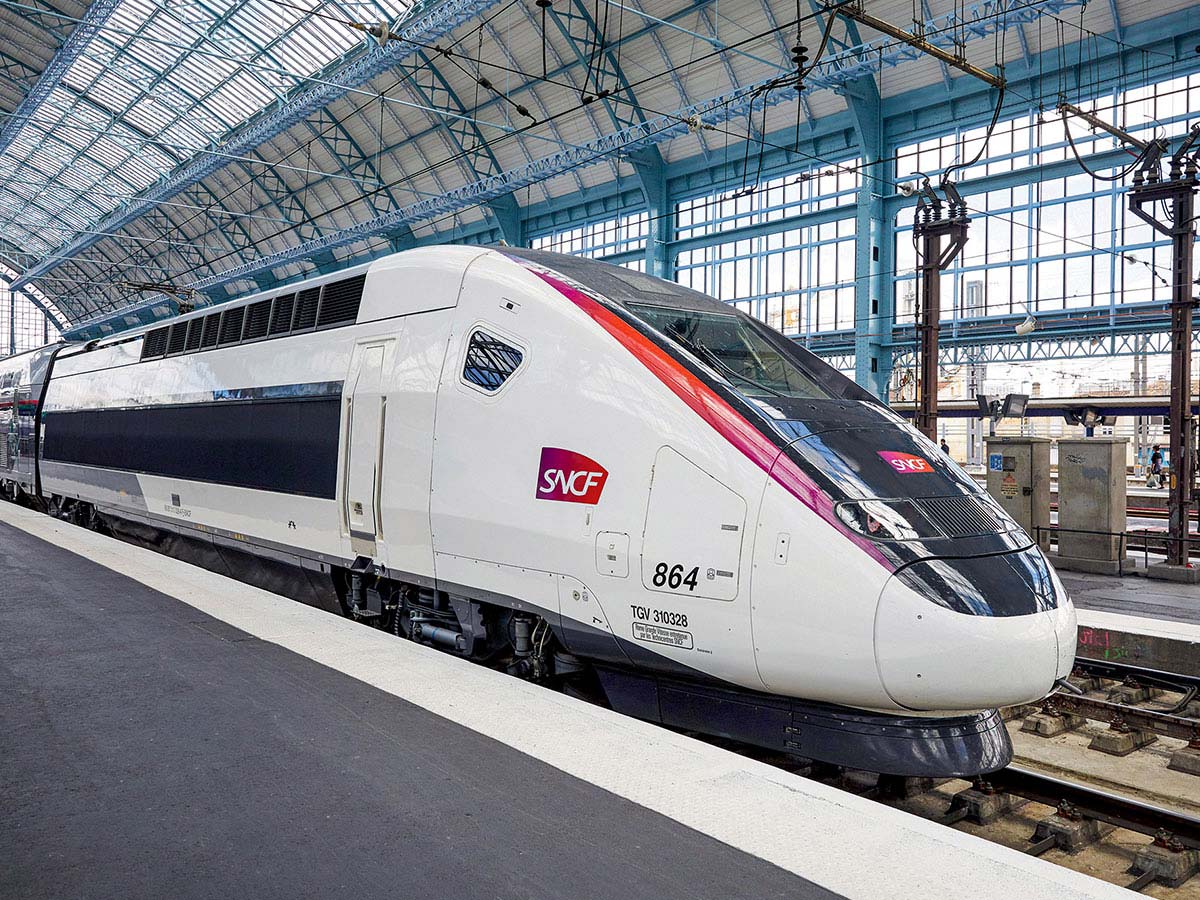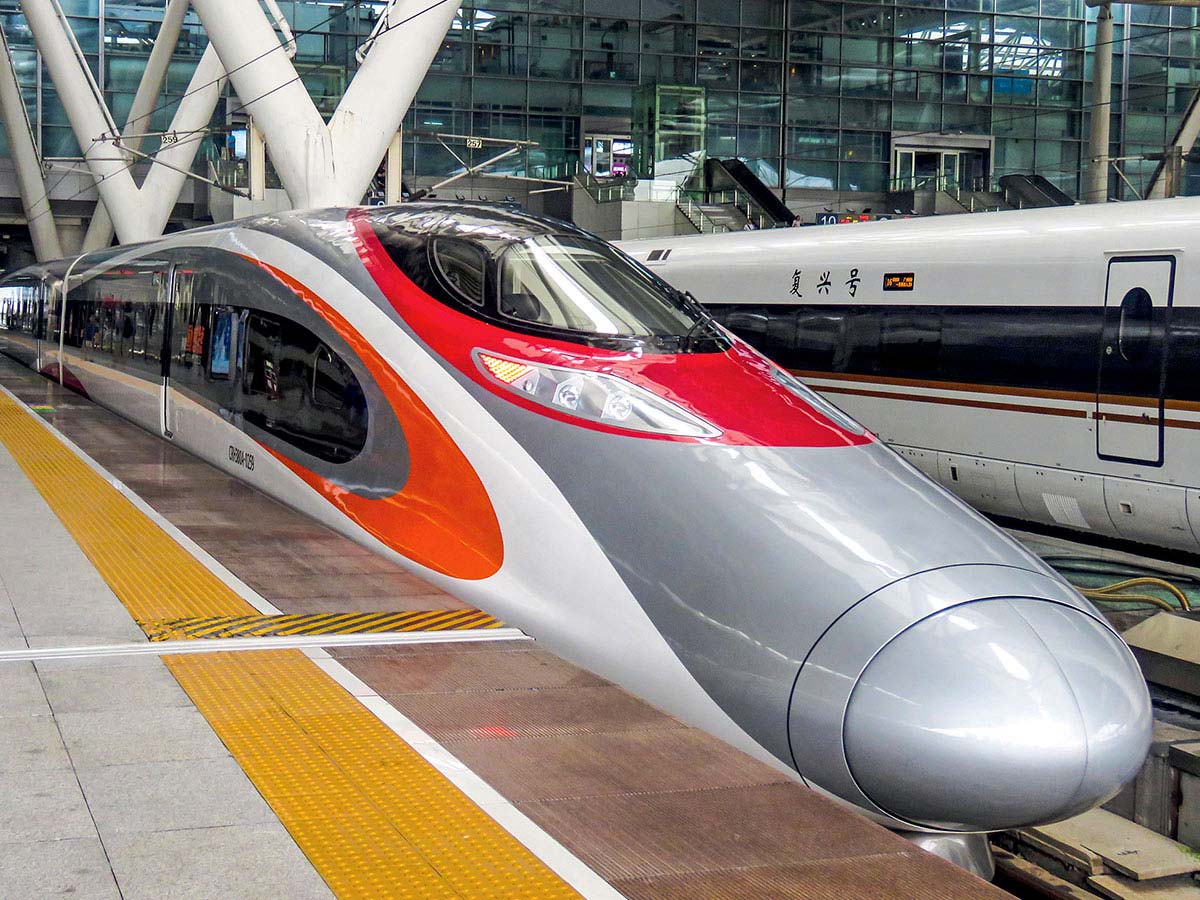TANGIER > CASABLANCA

2018 | Morocco
Journey
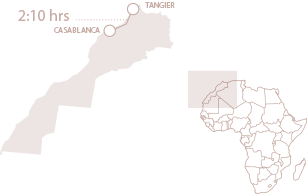
More Info
- Length in km: Tangier-Kenitra: 200 km
Kenitra-Rabat: 49 km
Rabat-Casablanca: 90 km - Name of the train: Al Boraq
Well-known for its quality of life, warm welcome, cultural richness and bewitching landscapes, Morocco is a destination of choice. To the eyes of the world, it combines the magic of the Sahara, the glorious past of its imperial cities, the light of white cities swept by Atlantic winds and the snow-capped peaks of the Atlas Mountains. Morocco’s economic activity is concentrated primarily in Rabat, the capital city, in Casablanca, and for the past decade in Tangier, le new industrial and logistical centre of the Kingdom. Tangier has become a hub between Europe and Africa, and a showcase for Morocco on the international stage. In addition, since its inauguration in 2018, the first high-speed line in Africa, connecting Casablanca and Tangier, represents a turning point in the history of Morocco and a real opportunity for development in the Kingdom.
Leaving Tangier
At the crossroads of Africa and Europe, as well as the Mediterranean and the Atlantic, Tangier climbs the slopes of a vast hill overlooking the Strait of Gibraltar and Spain beyond. The city continues to cultivate its cosmopolitan past. Many are the writers, painters, and poets who have succumbed to its charms. Joseph Kessel dedicated one of his books, Au Grand Socco, to the famous square in the medina. One must only stroll through the kasbah and its palace-museum to plunge into Tangier’s past, looking out over the sea, and stopping for mint tea at the legendary Café Hafa, a favourite of writer Paul Bowles. The rest of the city, on the other hand, is virtually unrecognisable. In the span of a decade, Tangier has become a modern metropolis, stimulated by the influx of economic activity around the Tanger Med port and its duty-free area, Tanger Free Zone.
Tangier-Ville station, the point of departure for the high-speed train, is itself the heart of a new and dynamic business district. To welcome the implementation of the train, a new, highly contemporary structure blends artfully with the older edifice, whose two slender towers were built in 2003. The surface area of the station has been quadrupled. Walls of glass lead seamlessly from the wide esplanade to the platforms, while taxis, cars, and buses circulate within a restricted area. Covering the concourse is a flat roof, pierced to allow the natural flow of light. Here is a nod to the traditional geometric motifs of zellij and moucharabieh, where the rhombus, or diamond, dominates in every way. In summertime, fountains and green plants provide a cool respite, while photovoltaic panels and ventilation ensure a thermal regulation that is both ecological and efficient.
The first African high-speed line
Since the beginning of the 2000s, the Moroccan railway has seen an unprecedented boom under the initiative of King Mohammed VI. Extension, modernisation, and renovation have transformed the rail stations and infrastructures. In 2006, Morocco made the commitment to introduce high-speed, in order to better connect political, economic, and tourism centres, all the while anticipating the evolution of the country’s major cities. Tangier-Casablanca was the clear choice as priority axis, uniting the two most dynamic cities of the Kingdom. In 2007, Morocco and France signed a memorandum of understanding that would secure technological partnership and skills transfer. With the arrival of high-speed, a new industry was born in Morocco, as well as professional roles that require specific expertise. Trains built by Alstom are now maintained by a French-Moroccan company, in an ultra-modern maintenance facility. The two countries also joined forces to create, in 2015, the Rail Training Institute (IFF) in Rabat, which has itself become an international point of reference. In 2018, after nearly ten years of works, the first high-speed rail line in Africa, connecting Tangier to Casablanca, was inaugurated with a train circulating at 320 km/hr. A technological leap forward in the world of rail on the continent.
Tangier-Casablanca, the journey
After departing from the Tanger-Ville station, the high-speed train known as Al Boraq passes close to the maintenance facility at the foot of the Moghogha hill, then gradually picks up speed to cross the Tangier-Casablanca motorway and winds its way through the hills of Mharhar. The line runs along the heritage site of Tahadart, an estuary formed by the mouth of Oued Tahadart and its tributary, Oued El Hachef. Bordered by forests, this estuary is fed by marshes and rainfall, and is home to hundreds of migratory birds, including the Great Bustard, a rare and protected species in Morocco. The high-speed train hurtles across the 3.5 kilometres of El Hachef, which spans lands that are arid in summer, inundated in winter, and covered with flowers in springtime.
Near Oued Lahlou, in the distance passengers can see Assilah, a charming little white city surrounded by ramparts, on the edge of the Atlantic. The train then crosses the Khemis Sahel plain, hidden behind rows of cork oaks and eucalyptus trees, and runs above the rice fields bordering Oued Loukkos, on the long viaduct that bears its name. Not far away are the ruins of Lixius, an ancient city that was Phoenician, Carthaginian, then Roman. The line passes close by the quiet Arab-Andalusian city of Larache. The track then skirts the natural reserve of Moulay Bousselham and its magnificent lagoon, Merja Zerga, cut off from the ocean by a stretch of dunes that attract thousands of birds each year, including nearly two thousand pink flamingos. Further on, the Gharb plain is recognisable by its sugar cane and sunflowers, its fruit and vegetable plantations. The high-speed train leaves the Oued Sebou behind and pulls into the station at Kenitra, the rapidly-growing capital of the Gharb region. Here ends the first section of the high-speed rail line. The train now slows to follow its route past the immense forest of cork oaks at Maamora, a site that is biologically diverse to a remarkable degree. As we approach Rabat, the Bouregreg Valley is visible in the distance, as is the majestic 12th century minaret of the Tour Hassan, the capital city’s emblem. After a few tunnels, the high-speed train stops at the platform of the immense Rabat-Agdal station. Elegant and modern, the edifice sports very contemporary facades that are etched with geometric patterns. The tracks will eventually be covered by a great slab promenade lined with trees, which will considerably transform the surrounding areas. For the duration of the last stretch to Casablanca, the line overlooks surf beaches, offering lovely getaway destinations along the Atlantic coast. The line passes through mall cities and suburbs the rest of the way to Casa-Voyageurs rail station.
A human and technical saga
The construction of the first high-speed line between Tangier and Casablanca was a technical, industrial, and human challenge, unprecedented in the history of rail in Morocco. Works were very complex to build due to the delicate nature of the terrain, including floodplains, unstable slopes and the major engineering structures required. Innovative engineering methods and specific treatments have been put in place to dry the terrain or to reinforce track stability. Loose underlying materials were replaced by gravel and cobble. A steel structure was introduced into large concrete viaducts to reduce their weight. Among the twelve viaducts along the line, each one proof positive of technical prowess, the El Hachef is the most impressive due to its length: 3.5 kilometres. The structure rests upon reinforced concrete piles bored 60 metres deep. In addition, specific detectors were installed to prevent seismic and climatic risks, notably violent crosswinds. A new remote-control centre, known today as the Network Central Command (CCR) and based in Rabat, monitors the entire network.
The environment as priority
Between Tangier and Kenitra, the high-speed line route was laid out to avoid as best possible all heritage sites, agricultural holdings, and waterways in order to conserve natural environments and ecosystems. It travels alongside several sensitive areas such as the Tahadart estuary, the Loukkos marshes, Khmis Sahel forest, and finally Merja Zerga, the lagoon known around the world for its population of migrating birds. Across the full length of the track, actions were taken to reforest and to reintroduce or monitor rare species.
The Moroccan high-speed line is:
Over 5,000 men.
800 kilometres of rail.
12 viaducts.
164 road bridges and rail bridges.
117 hydraulic infrastructures.
→ Laying of rail on an engineering structure in the Tangier region.
Exceptional stations
A new generation of stations rose up at the same time the high-speed train was put into circulation, and have become the pride of a nation. Due to very contemporary and highly functional design, these stations defy the future, embracing oversize dimensions that anticipate the traffic growth in the years to come. They are truly multi-service spaces, and are transforming the urban landscape, spurring new dynamics and economic and social valorisation. The structures of Kenitra, Rabat-Agdal and Casa-Voyageurs - which straddles and covers part of the platforms and tracks - have reunited neighbourhoods that were once cut off by rail tracks. These bridge-stations, integrated under a single roof, favour the mobility of local residents who use it as a zone of passage.
The simple form and curves of the architecture have made Kenitra station a monument that is emblematic of the city. Wrapped in an elegant latticework, the station boasts eight arches that serve as entrances, and the triangle motif is repeated in both façade and roofline. Rabat-Agdal station is without a doubt the most impressive of the entire line, in terms of dimension. Taking inspiration from airport architecture, the station’s halls are vast, offering boarding rooms, a food court and contemporary restaurant chains. The station straddles the rail tracks, and has thus transformed the area, becoming a major passageway for inhabitants living in once-separated neighbourhoods, now joined together.
ONCF
Office National des Chemins de Fer (ONCF) ensures national rail network operations as well as the transport of passengers and goods.
→ Al Boraq, at Casa-Voyageurs Station.
Al Boraq, a train for everyone
In Morocco, Al Boraq evokes a winged horse, the legendary steed known for speed and flexibility. Dressed in the national colours of red and green, Al Boraq has a powerful identity, and its logo incarnates the qualities of motion, lightness, and speed. The rail cars offer two classes of service, and interior spaces that are resolutely modern: spacious and comfortable seats, geometric upholstery dotted with stars and diamonds, and screens providing travel information. On board spaces have been revisited to accommodate reduced-mobility passengers, and a rail car is designated to facilitate train access. Finally, a restaurant-car replaces traditional food carts.
In the grand tradition of Moroccan hospitality, ONCF has added a signature to its name: “It’s Your Train”. Both platform and on-board service has been reconsidered, with additional auditory and visual information and agents to welcome and accompany customers, all designed for optimum user experience. The ticketing system was completely overhauled to adapt to new modes of consumption: fares based upon age, season, departure date, advance purchase and frequency of travel. These special offers require advance reservation.
A fleet of twelve duplex trains travel between Tangier and Casablanca. They are interoperable, able to operate on the high-speed section – currently between Tangier and Kenitra – as well as the conventional Kenitra-Casablanca line. The trains have been adapted to the Moroccan environment and operational context, undergoing “tropicalisation” to be able to resist high temperatures, sand and dust. Air conditioning and filtering systems have been reinforced.
Arriving at Casablanca
The train arrives in Casablanca at the new Casa-Voyageurs rail station, whose contemporary style combines effortlessly with the existing Moorish architecture of the original station. This well-proportioned station acts as a bridge, linking the downtown area to a formerly-segregated district undergoing new development. It has become a meeting place and point of transit, approached from each side by a monumental, tiered plaza. The second level boasts a pedestrian walkway with hanging gardens, cafés and a shopping concourse, and the already-emblematic flat roof structure of the station is visible from afar. The roof rests upon a framework studded with a hundred light projectors, then clad with panels of perforated acrylic. This retro-lighting system illuminates the station at night like a gigantic urban lantern, emanating bright rectangles of light.
Casablanca, like any megalopolis, cannot be taken in at first glance. The city is the economic, cultural and artistic hub of modern-day Morocco, pulsing with energy and hard at work. Next to the old medina - the original core of the city - is Casablanca’s downtown district, famous as an experimental laboratory for avant-garde European architects in the first half of the 20th century. Among the contemporary glass buildings lie exquisite Art Deco structures, whose elegant lines were adapted to the traditional Moroccan habitat. Visitors might leave the urban frenzy behind to head for the Corniche, the road that fronts the Atlantic Ocean. On a man-made land spur jutting out into the ocean, Hassan II– the father of King Mohammed VI – built an immense mosque that bears his name, and whose minaret stands tall above the city. The great care devoted to this royal masterpiece can be seen in the materials used, a veritable repertoire of the decorative arts.
Challenges and impact
The implementation of the first high-speed line between Tangier and Casablanca is a clear response to the social, economic, and demographic challenges of the Kingdom. Bringing together the north and the centre of the country, this line opens up territories and contributes to development in all three regions crossed. Faster trains, in greater number and with higher frequency create opportunity for trade and exchange. By shortening travel time, this line spurs greater work mobility and favours increased job opportunities.
Economic growth, urbanism and territorial image will all benefit from this new line. Drawing passengers away from the conventional track, high-speed trains allow for increased freight transportation, which is increasingly significant due to the development of port and logistics platforms at Casablanca and Tanger Med.
This new line also favours geographic proximity between the Kingdom and Europe, facilitating commercial relations and tourism between two continents. By relieving automobile traffic, the line creates the positive effect of improved air quality and reduced greenhouse gas emissions. All sectors will eventually benefit from this policy of rail infrastructure development. It manifests a forward-thinking solution for the mobility of people and goods as well as a powerful lever for economic development, competitivity, and employment opportunities.
The network of the future
The implementation of the high-speed line on the north-south axis has triggered a vast modernisation program along the entire network. Major works have been completed: the tripling of tracks between Kenitra and Casablanca, the rehabilitation of the rail tunnel connecting Salé to Rabat, the overhaul of rail facilities around Casablanca, the doubling of the full line between Casablanca and Marrakech, the modernisation of signalling installations across the network and the construction of high-tech rail stations. The Tangier-Casablanca line is the first step of a highly ambitious plan. Morocco has in fact established a plan for 1,500 kilometres of high-speed lines by the year 2040, including the “Atlantique” line from Tangier to Agadir as well as the east-west line of Rabat-Fez-Oujda.
a selection of HIGH-SPEED LINES by creation date
1964

TOKYO > OSAKA
1992

TURIN > NAPLES
1992

MADRID > SEVILLE
2002

COLOGNE > FRANKFURT
2008

BARCELONA > MADRID
2010

SEOUL > BUSAN
2011

BEIJING > SHANGHAI
2014

ANKARA > ISTANBUL
2014

LANZHOU > URUMQI
2016

SHANGHAI > KUNMING
2016

TOKYO > HAKODATE
2016


ZURICH > MILAN
2018

BEIJING > HONG KONG
2018

TANGIER > CASABLANCA
